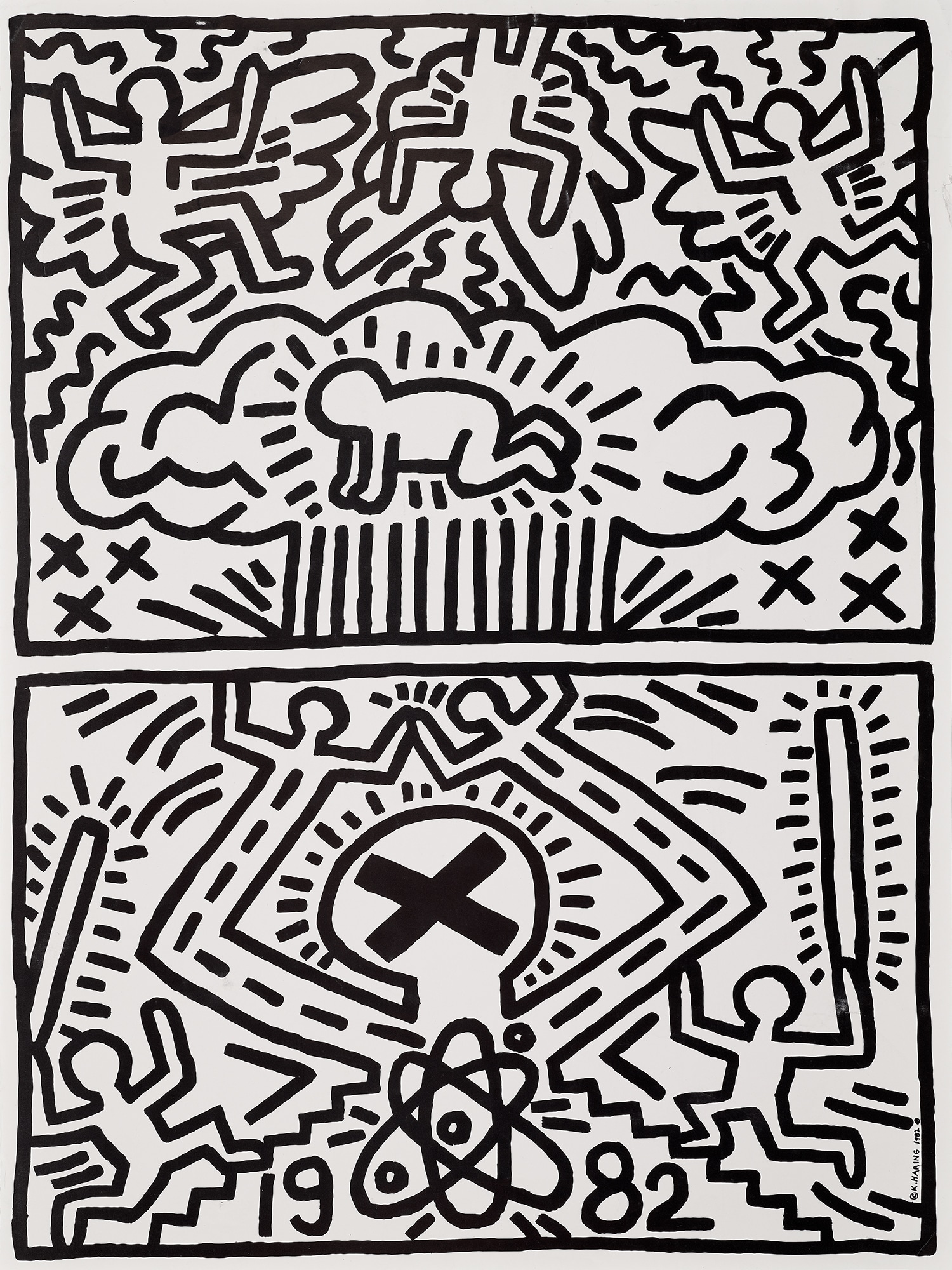

Property from the Lower East Side Printshop Archives
28
Keith Haring
Untitled (Poster for Nuclear Disarmament)
1982
Offset lithograph, on wove paper, the full sheet.
S. 24 x 18 in. (61 x 45.7 cm)
With printed signature, date and copyright symbol, presumably from the edition of approximately 20,000, published by the artist, unframed.
Further Details
Keith Haring
American | B. 1958 D. 1990Haring's art and life typified youthful exuberance and fearlessness. While seemingly playful and transparent, Haring dealt with weighty subjects such as death, sex and war, enabling subtle and multiple interpretations.
Throughout his tragically brief career, Haring refined a visual language of symbols, which he called icons, the origins of which began with his trademark linear style scrawled in white chalk on the black unused advertising spaces in subway stations. Haring developed and disseminated these icons far and wide, in his vibrant and dynamic style, from public murals and paintings to t-shirts and Swatch watches. His art bridged high and low, erasing the distinctions between rarefied art, political activism and popular culture.